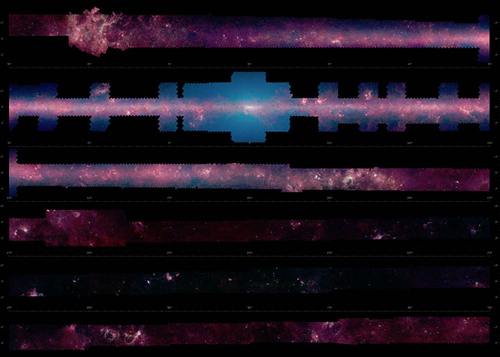A zoomable 360-degree view of our galaxy
March 25, 2014

360-degrees Milky Way (credit: Spitzer Space Telectope)
NASA’s new zoomable, 360-degree mosaic, presented Thursday at the TED 2014 Conference in Vancouver, allows for exploring the Milky Way interactively.
The panorama of our galaxy is constructed from more than 2 million infrared snapshots taken over the past 10 years by NASA’s Spitzer Space Telescope.
The 20-gigapixel mosaic uses Microsoft’s WorldWide Telescope visualization platform. It captures about three percent of our sky, but because it focuses on a band around Earth where the plane of the Milky Way lies, it shows more than half of all the galaxy’s stars.
The image, derived primarily from the Galactic Legacy Mid-Plane Survey Extraordinaire project, or GLIMPSE, is now online.
Launched into space in 2003, Spitzer has spent more than 10 years studying everything from asteroids in our solar system to the most remote galaxies at the edge of the observable universe. In this time, it has spent a total of 4,142 hours (172 days) taking pictures of the disk, or plane, of our Milky Way galaxy in infrared light. This is the first time those images have been stitched together into a single, expansive view.
Some sections of the GLIMPSE mosaic include longer-wavelength data from NASA’s Wide-field Infrared Survey Explorer, or WISE, which scanned the whole sky in infrared light.
The GLIMPSE data are also part of a citizen science project, where users can help catalog bubbles and other objects in our Milky Way galaxy. To participate, visit: http://www.milkywayproject.org.